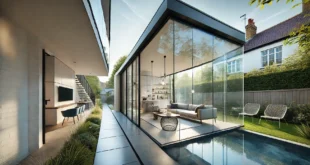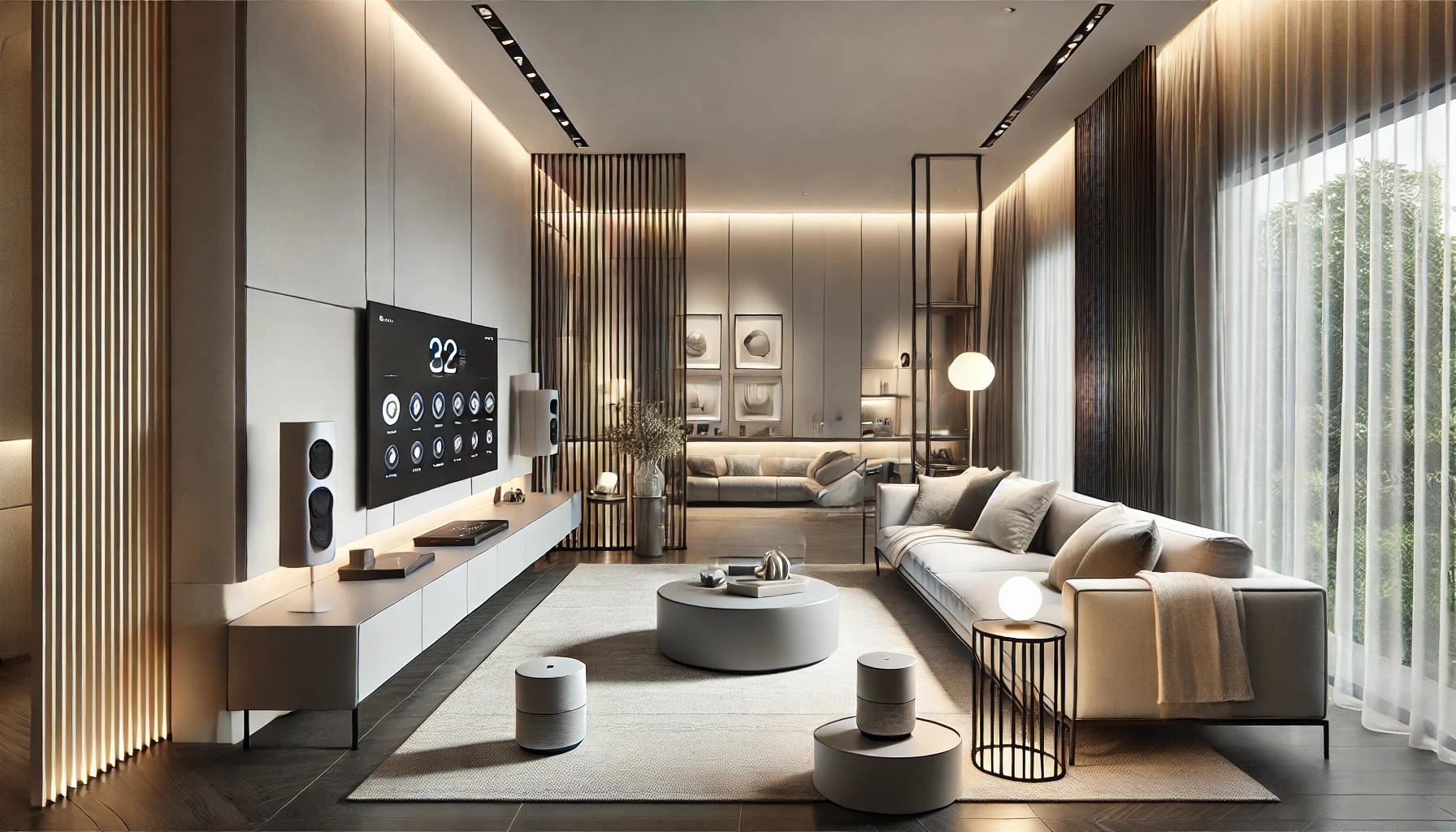
Welcome to a world where technology meets comfort and convenience—welcome to the future of smart home design! As a professional home designer, my goal is to guide you in transforming your living spaces into efficient, automated environments that enhance your lifestyle. Smart home design isn’t just about trendy gadgets—it’s about integrating systems that offer convenience, energy savings, and security, all while maintaining your unique design preferences.
In this article, I’ll walk you through the key aspects of smart home design, share the latest trends, and help you understand how to incorporate them into your home. Whether you’re just starting with smart home technology or looking to upgrade your existing setup, this guide has something for everyone. Let’s dive into the world of smart homes and explore the endless possibilities for creating a seamless, tech-savvy living environment!
Smart Home Design Ideas: Enhancing Comfort and Functionality
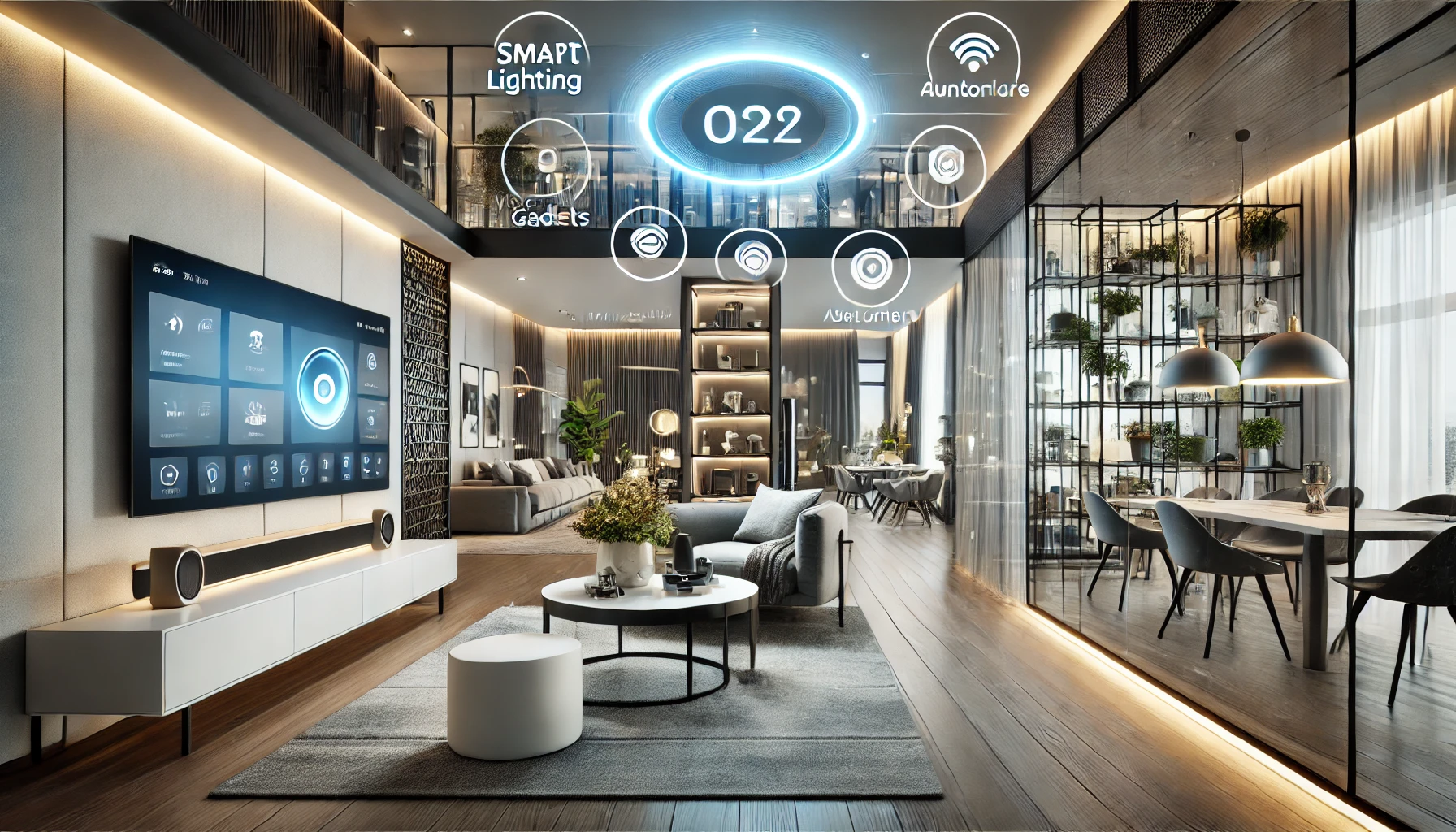
Creating a seamless living experience
Smart home design ideas are focused on creating spaces that improve the overall quality of life through automation. The key is to ensure that every system, from lighting to temperature control, works harmoniously to create an intuitive living environment. Whether you’re controlling your home via voice commands or a mobile app, the experience should be seamless.
Integrating smart features into existing designs
One of the biggest challenges homeowners face is incorporating smart technology into pre-existing designs. Fortunately, modern smart devices are built to be adaptable and user-friendly. Designers are increasingly integrating smart systems without compromising the aesthetic appeal of the home. From hidden wiring solutions to sleek smart thermostats, it’s now easier than ever to balance technology and design.
Best Smart Home Devices for Effortless Living
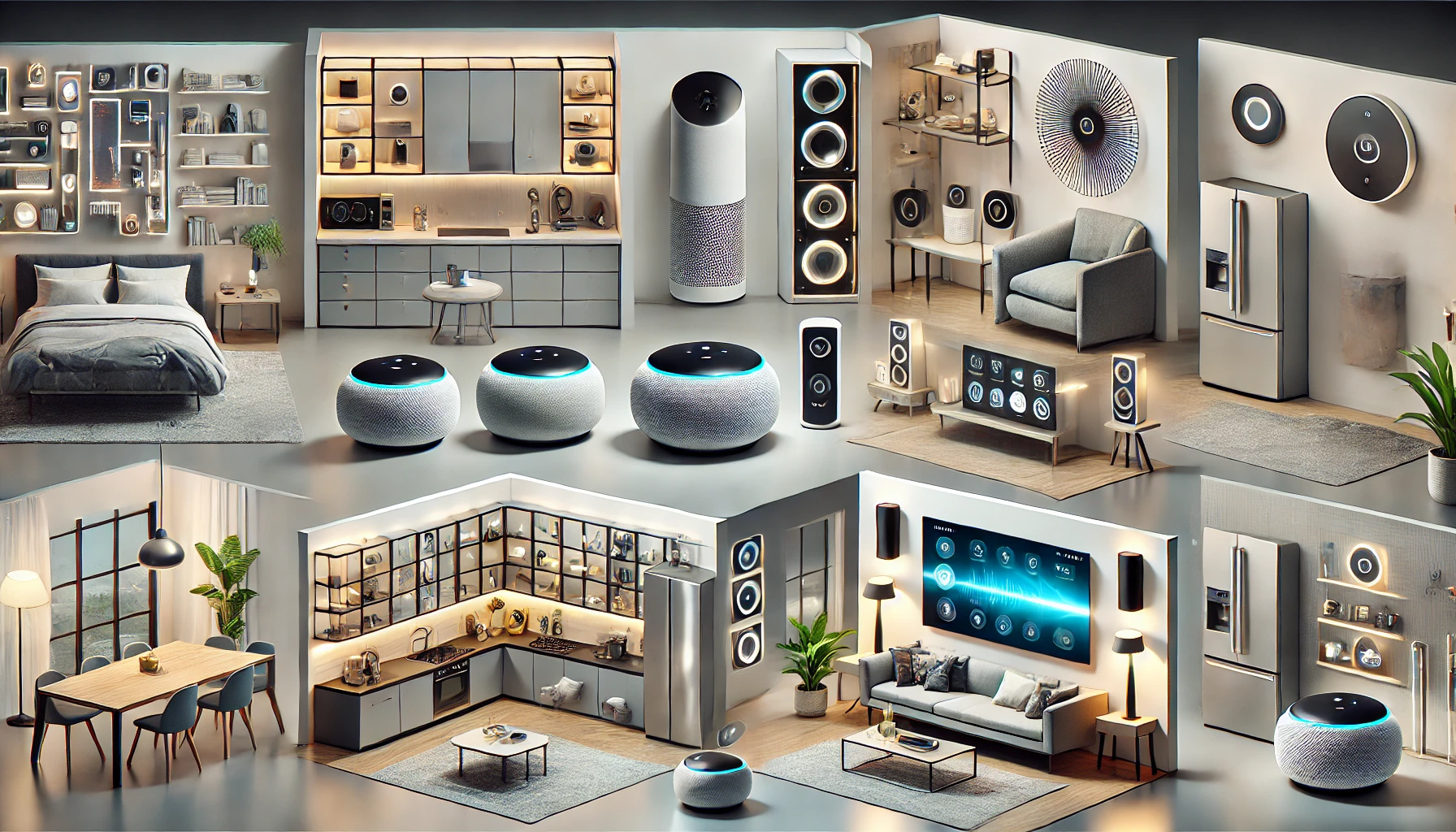
Choosing the right smart gadgets
To truly transform your home into a smart home, you need the right devices. From smart speakers and home assistants to intelligent lighting systems, the options are endless. The best devices are those that cater to your lifestyle, offering convenience without overwhelming you with unnecessary features. High-quality devices are now more affordable, making it easier for anyone to upgrade their home.
Top recommendations for every room
When selecting smart devices, think about how each room in your home can benefit. In the living room, smart TVs and sound systems can create the ultimate entertainment experience. In the kitchen, smart appliances like refrigerators and ovens offer efficiency. Each space can be enhanced with the right tech, providing a balance of comfort and practicality.
Smart Home Automation: Simplifying Daily Routines
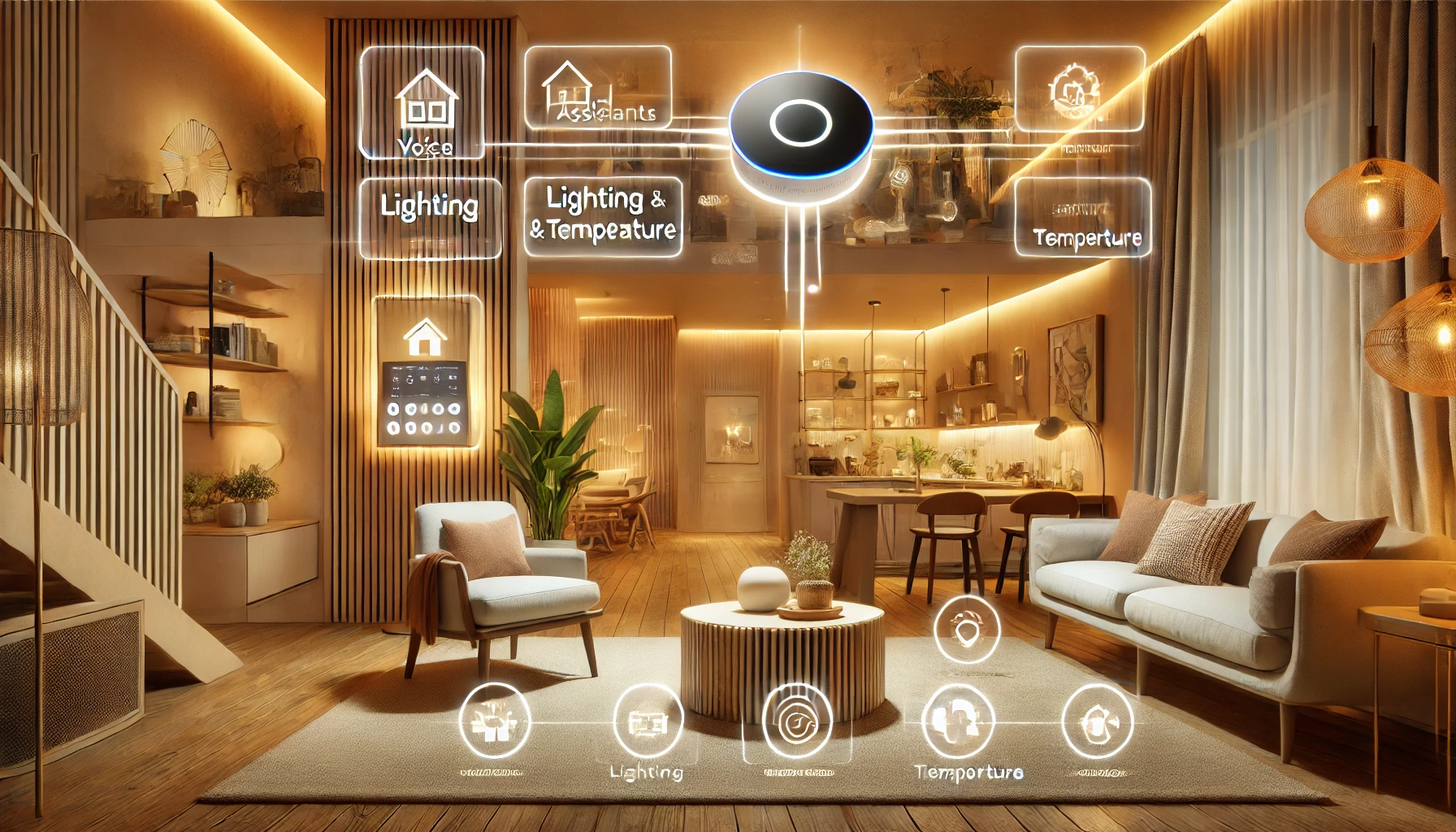
Automating repetitive tasks
Smart home automation allows homeowners to automate repetitive tasks, such as turning lights on and off or adjusting the thermostat. These small changes can significantly improve your quality of life by freeing up time and making your home more energy-efficient. Automation makes it possible to focus more on living and less on managing your home.
Enhancing home security with automation
Home security is another major advantage of smart automation. Smart locks, cameras, and security systems can be automated to provide round-the-clock protection, whether you’re at home or away. This technology adds peace of mind, knowing that your home is always safe.
Energy-Efficient Smart Homes: Saving Money and the Planet
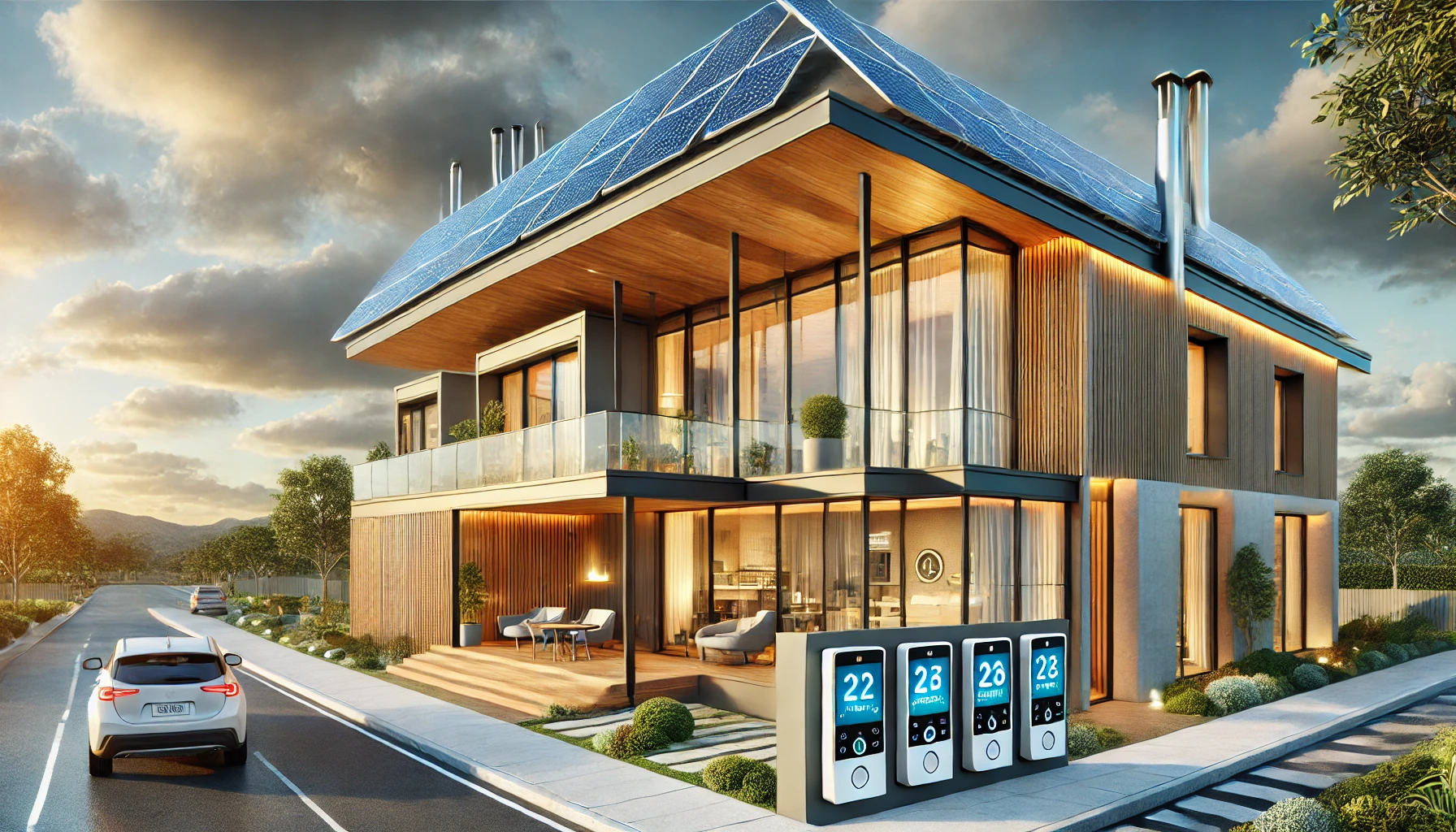
How smart homes reduce energy consumption
Energy efficiency is one of the top reasons homeowners turn to smart home technology. Devices such as smart thermostats and energy monitors can help you track your home’s energy usage and reduce waste. By automating energy-intensive tasks like heating, cooling, and lighting, you can lower your bills while also reducing your carbon footprint.
Investing in eco-friendly smart home systems
There’s also a growing interest in eco-friendly smart home systems. Solar-powered devices and smart energy storage solutions are becoming more accessible, allowing homeowners to go green without sacrificing comfort. An investment in energy-efficient systems will pay off in long-term savings and contribute to a more sustainable future.
Smart Home Lighting Systems: Setting the Perfect Mood
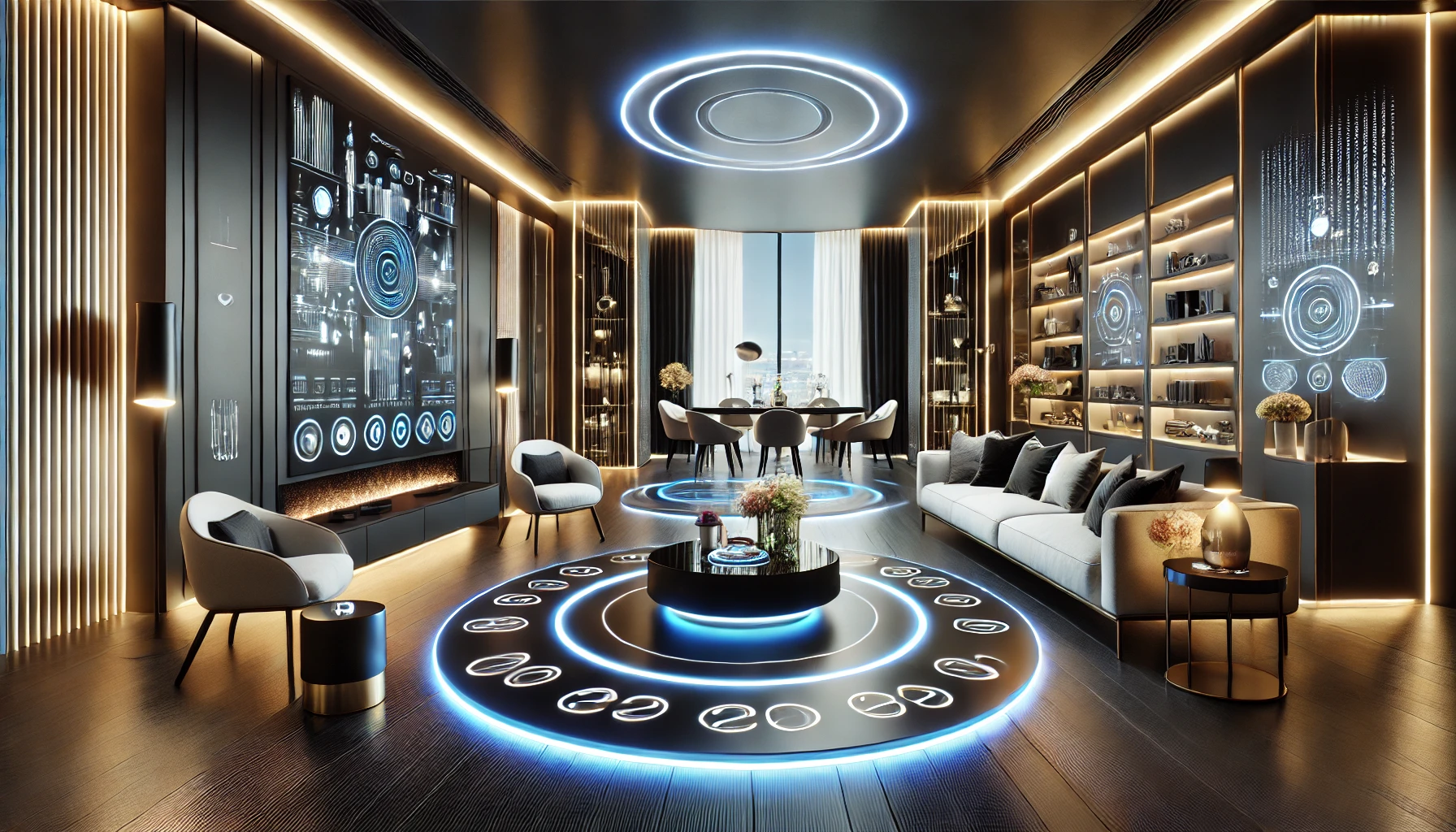
Personalizing your home lighting
Lighting plays a huge role in setting the mood of a room, and with smart home lighting systems, you can customize the brightness, color, and timing of your lights. Whether you’re setting a cozy atmosphere for movie night or brightening up your home office, smart lighting offers endless possibilities.
Saving energy with smart lighting
Smart lighting systems also help save energy by allowing you to automate when lights turn on and off. This eliminates the need to worry about leaving lights on when you’re not home, and it reduces your overall energy consumption.
Affordable Smart Home Solutions: Budget-Friendly Upgrades
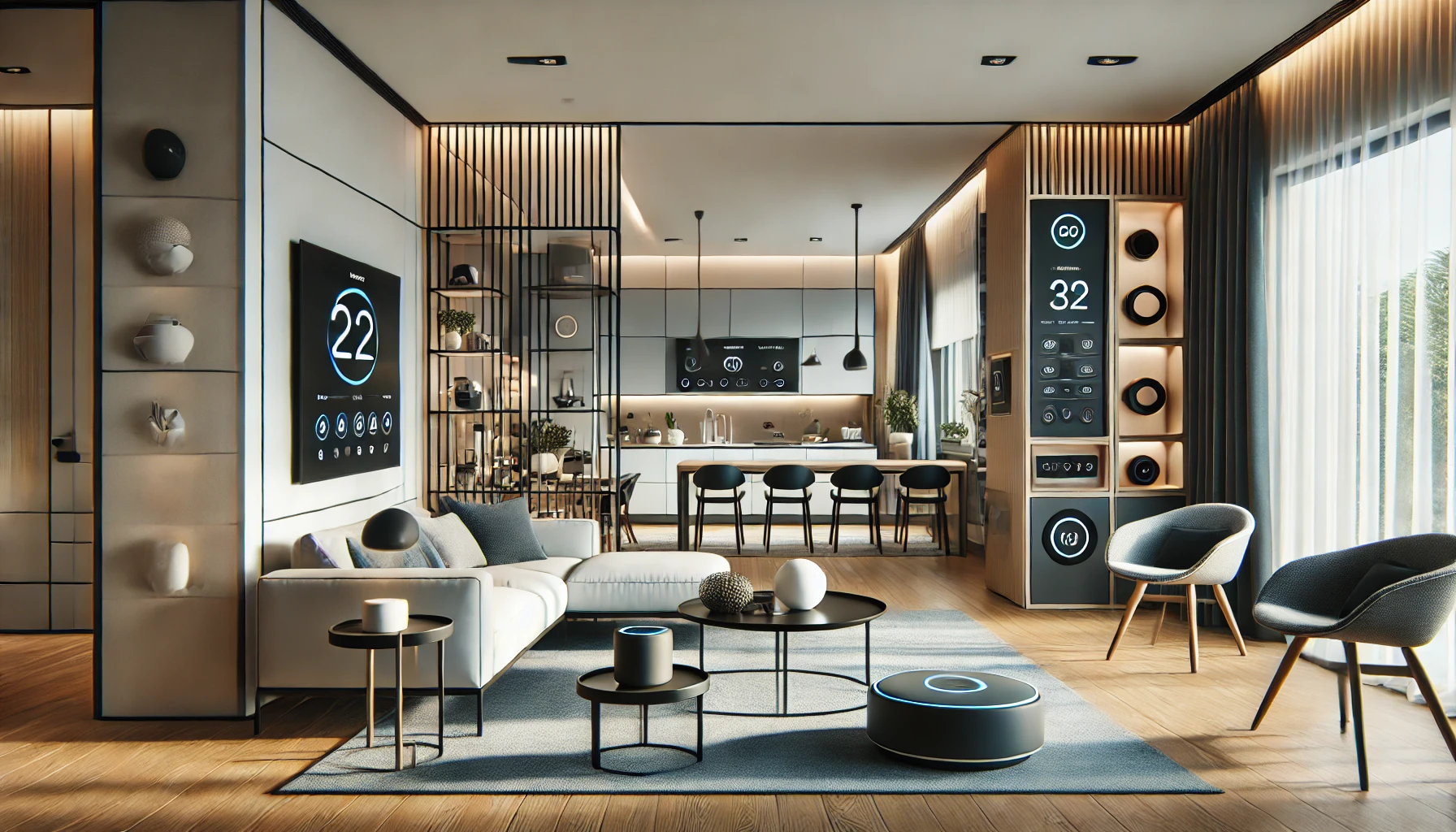
Smart tech doesn’t have to break the bank
Contrary to popular belief, smart home design doesn’t have to be expensive. There are plenty of budget-friendly smart home devices that offer incredible value for the price. From smart plugs to basic home assistants, these cost-effective gadgets can make a significant difference in your daily life without a major investment.
DIY smart home projects
If you’re handy with tools, DIY smart home projects are a great way to cut costs while upgrading your home. Many smart devices are designed to be user-friendly, so even those with limited technical knowledge can install them. This approach allows you to control the cost and make gradual improvements over time.
Smart Home Technology Trends: What’s New in 2024?
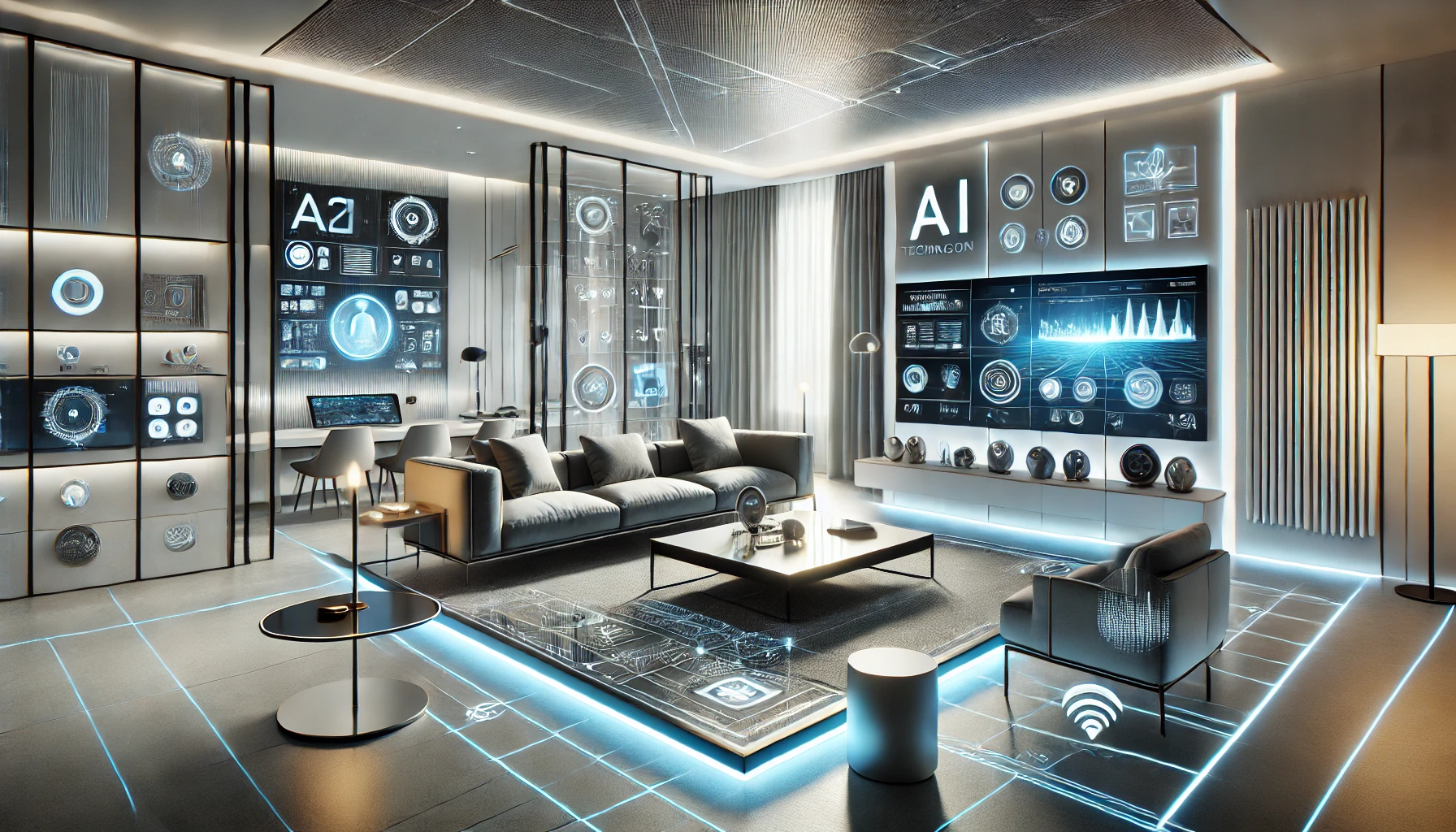
The rise of AI in smart home systems
Artificial intelligence is taking smart homes to the next level, making them more intuitive and responsive. AI-powered systems can learn your preferences and habits, adjusting settings automatically to enhance your comfort and energy efficiency. In 2024, expect to see more AI-driven innovations that will make managing your home even easier.
Interconnected ecosystems
The future of smart home technology lies in interconnected ecosystems, where all your devices communicate seamlessly with each other. This creates a more streamlined experience, where your smart home can anticipate your needs and respond accordingly. As technology evolves, expect greater integration across multiple platforms and devices.
DIY Smart Home Setup: How to Get Started
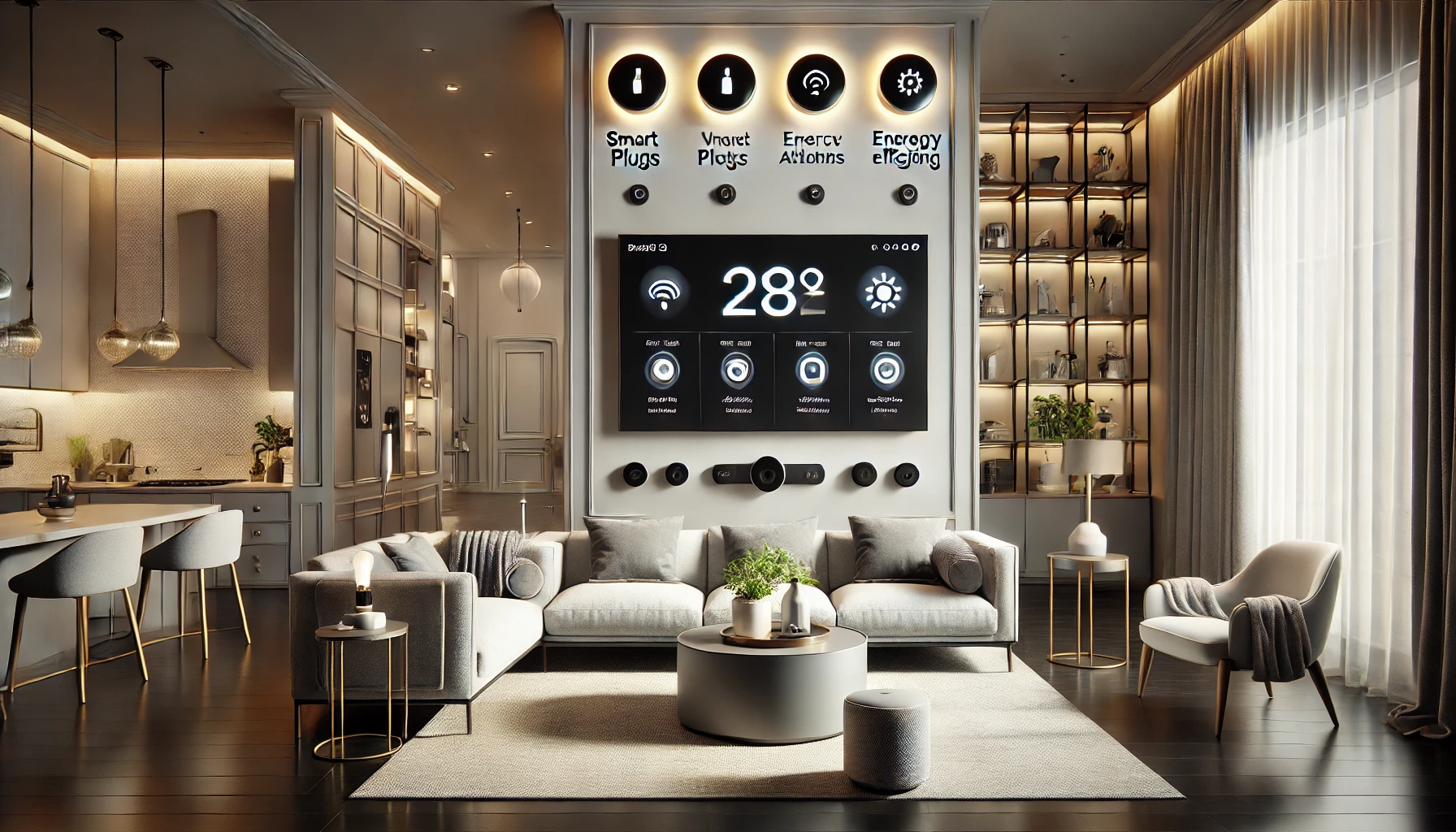
Essential tools for a DIY smart home
If you’re considering a DIY smart home setup, start by gathering the essential tools. You’ll need basic devices like smart plugs, smart bulbs, and a reliable Wi-Fi network to get started. These simple gadgets can make a big difference in automating your home and enhancing your everyday routines.
Step-by-step guide to setting up smart devices
Installing smart home devices is easier than you might think. Begin with small, manageable projects, such as setting up a smart speaker or automated lighting system. Once you’ve mastered these basics, you can expand your system to include more complex automation, such as security cameras or smart thermostats.
Home Security Smart Systems: Keeping Your Family Safe
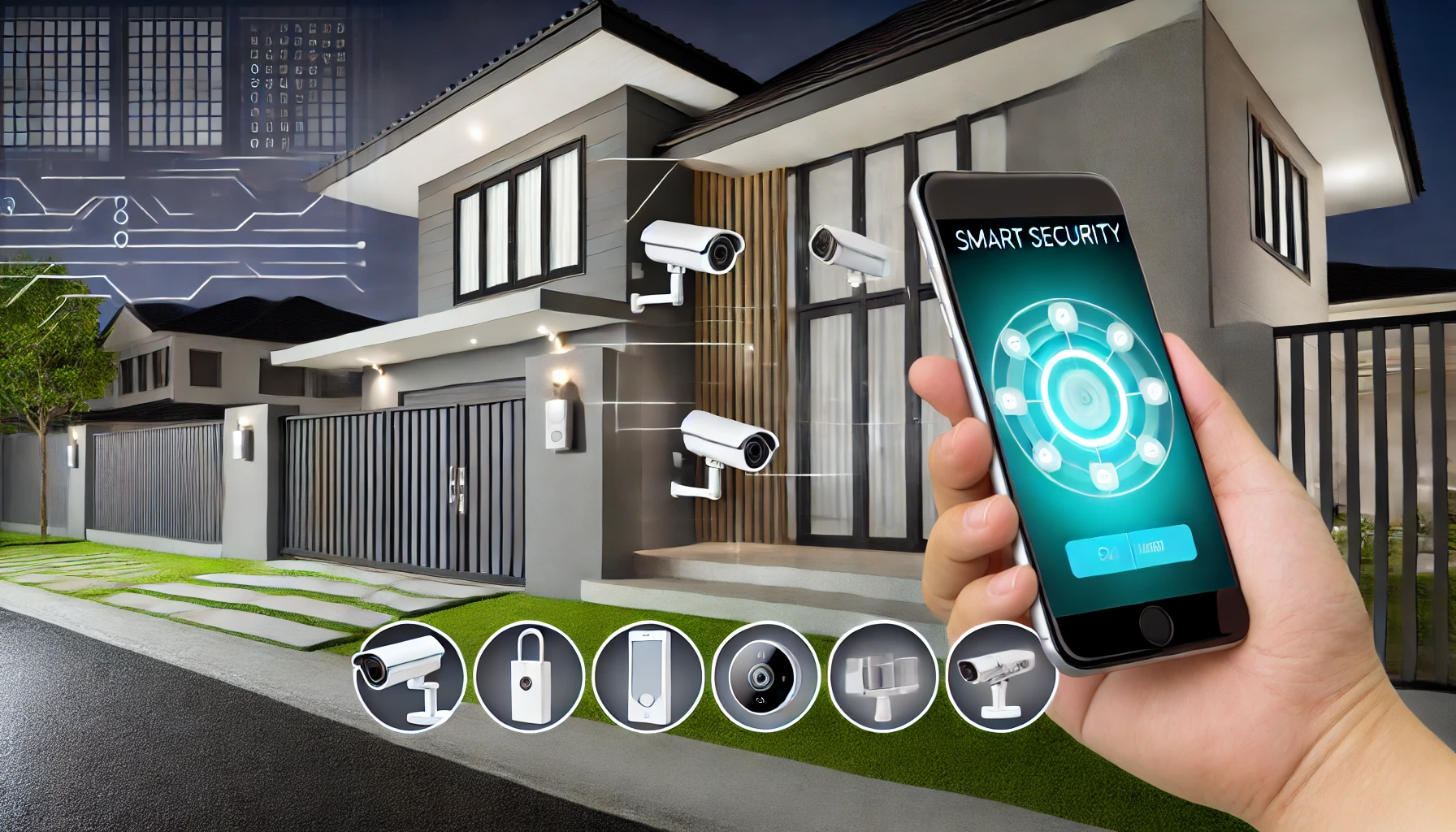
Smart locks and surveillance systems
When it comes to home security, smart technology is a game-changer. Smart locks and surveillance systems provide real-time monitoring and control over who enters your home. These devices can be integrated with your smartphone, allowing you to check in on your property even when you’re away.
Protecting your home with advanced security
Advanced security systems go beyond simple locks and cameras. Motion sensors, doorbell cameras, and automated alarms provide multiple layers of protection. Some systems even alert emergency services in the event of a break-in, offering peace of mind for you and your family.
Smart Home Design for Beginners: A Step-by-Step Approach
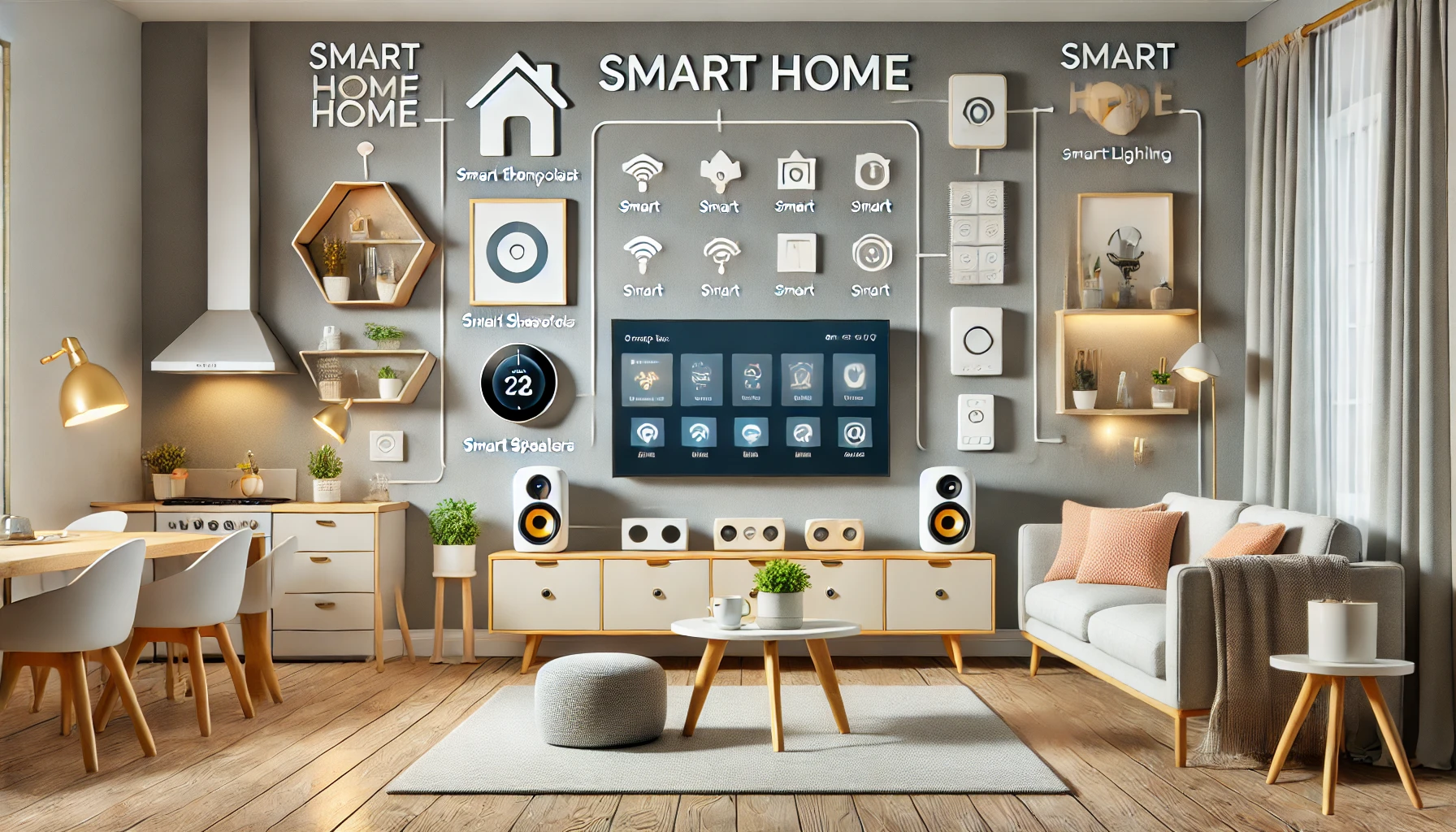
Choosing the right smart home products
For beginners, smart home design may seem overwhelming, but it doesn’t have to be. Start with simple devices like smart speakers or a smart thermostat. These products offer high functionality without the need for a complicated setup. Once you get the hang of it, you can move on to more advanced systems.
Creating a smart home that fits your lifestyle
It’s important to choose smart home products that fit your unique lifestyle. If you enjoy entertainment, invest in a smart TV and sound system. If you’re focused on energy savings, a smart thermostat or lighting system will provide the greatest benefits. Tailoring your setup to your needs ensures you get the most out of your smart home.
Smart Home Integration: Making All Your Devices Work Together
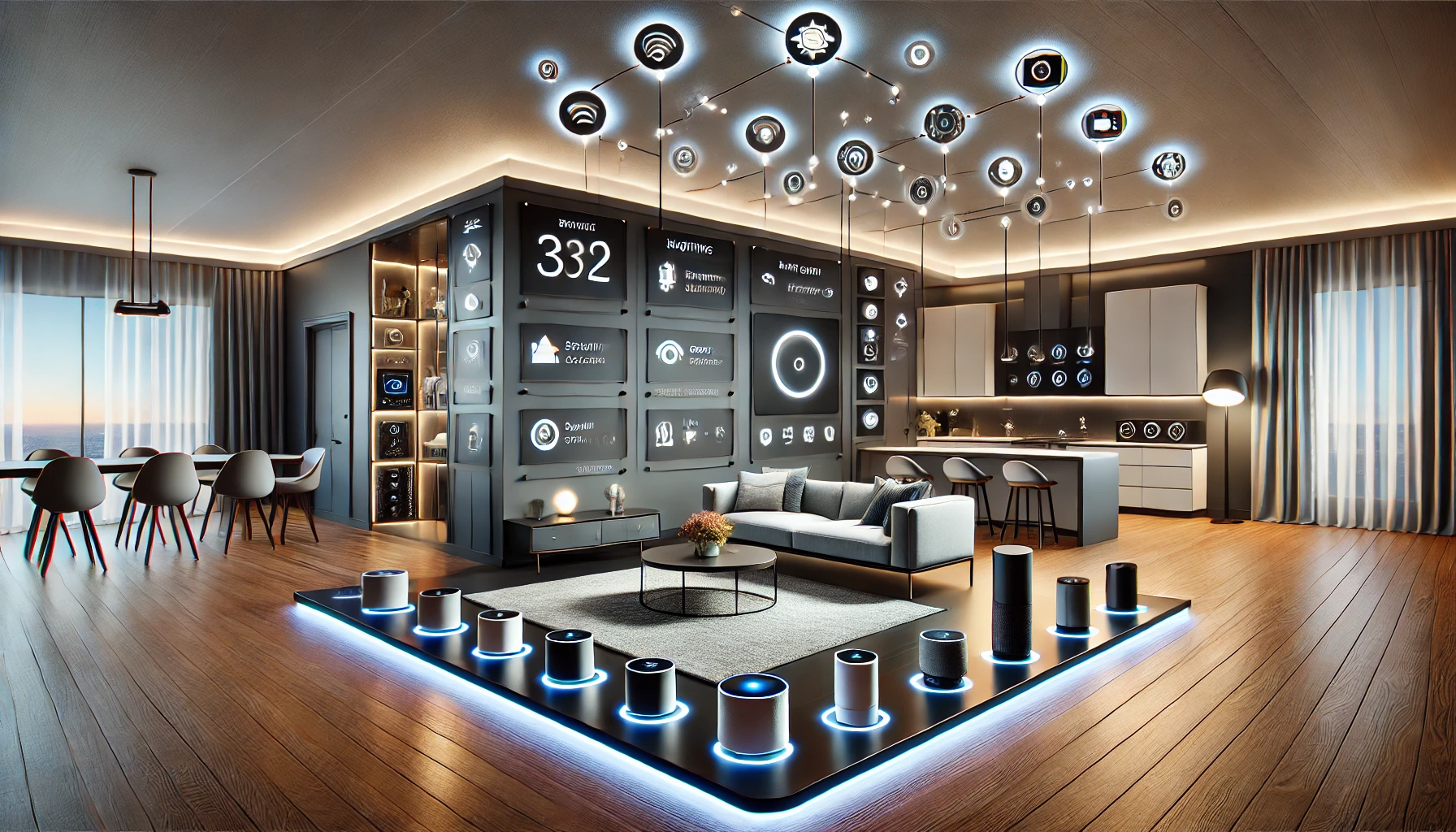
Bringing it all under one app
Smart home integration is the process of connecting all your smart devices so they can work together. With the right apps, you can control your entire home from one platform. This integration creates a seamless experience, making it easier to manage everything from lighting to security systems with just a few taps on your phone.
Ensuring compatibility between devices
When building a smart home, it’s crucial to ensure that your devices are compatible with each other. Not all smart devices work on the same platform, so you’ll need to do a bit of research before buying. Choosing devices from the same brand or those that support open ecosystems can help simplify the process.
Voice-Controlled Smart Home Devices: Convenience at Your Command
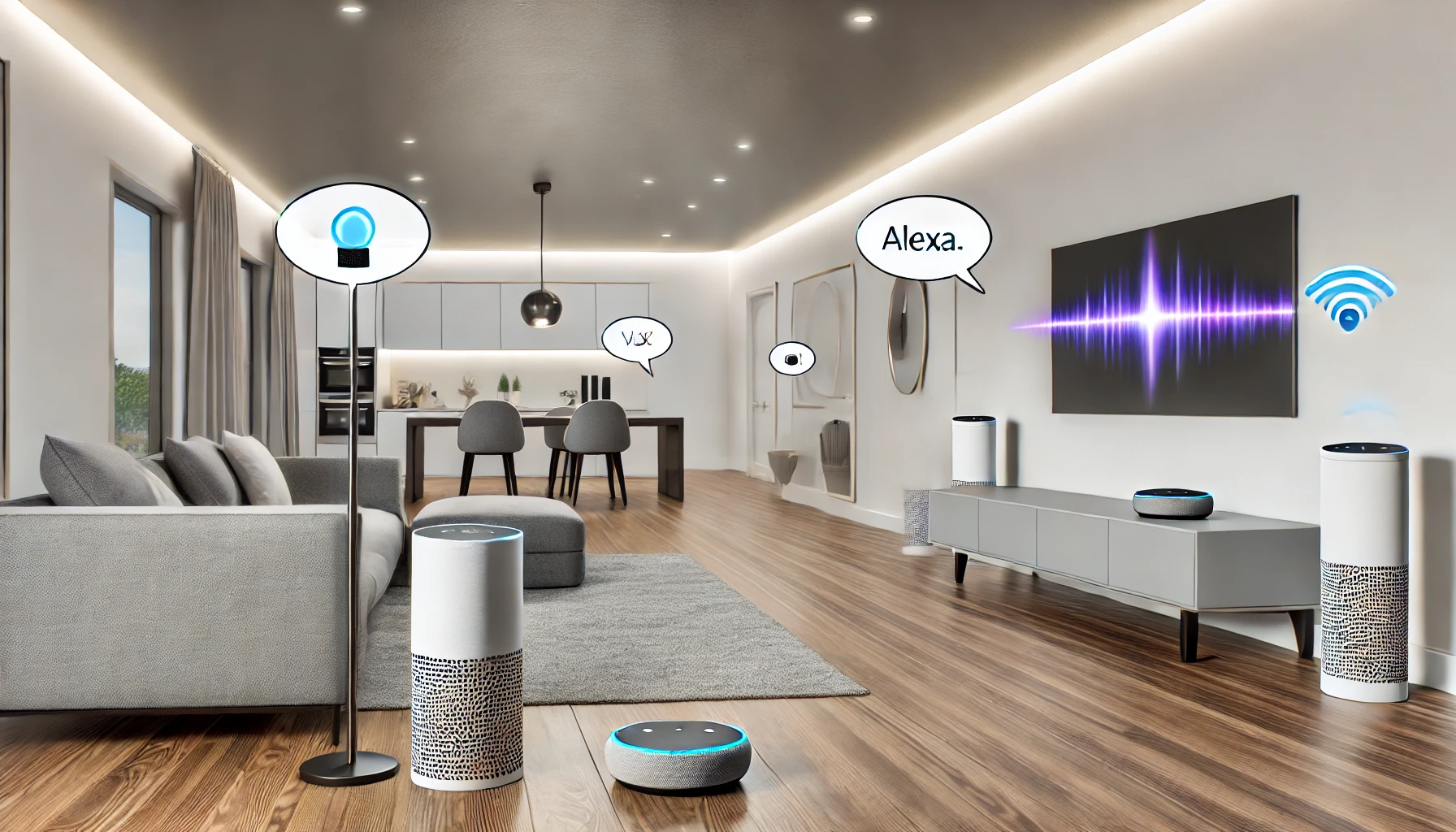
How voice assistants are revolutionizing smart homes
Voice-controlled devices, such as Amazon Alexa and Google Assistant, are making smart homes more user-friendly. These assistants allow you to control various aspects of your home with simple voice commands, making everyday tasks faster and more convenient.
Expanding the possibilities with voice control
Voice assistants are constantly evolving, offering more features and integrations with other smart home devices. From playing music to adjusting the thermostat, voice control adds a new level of convenience to home automation. As technology improves, expect even more seamless voice-command capabilities.
Smart Home Interior Design: Balancing Technology and Style
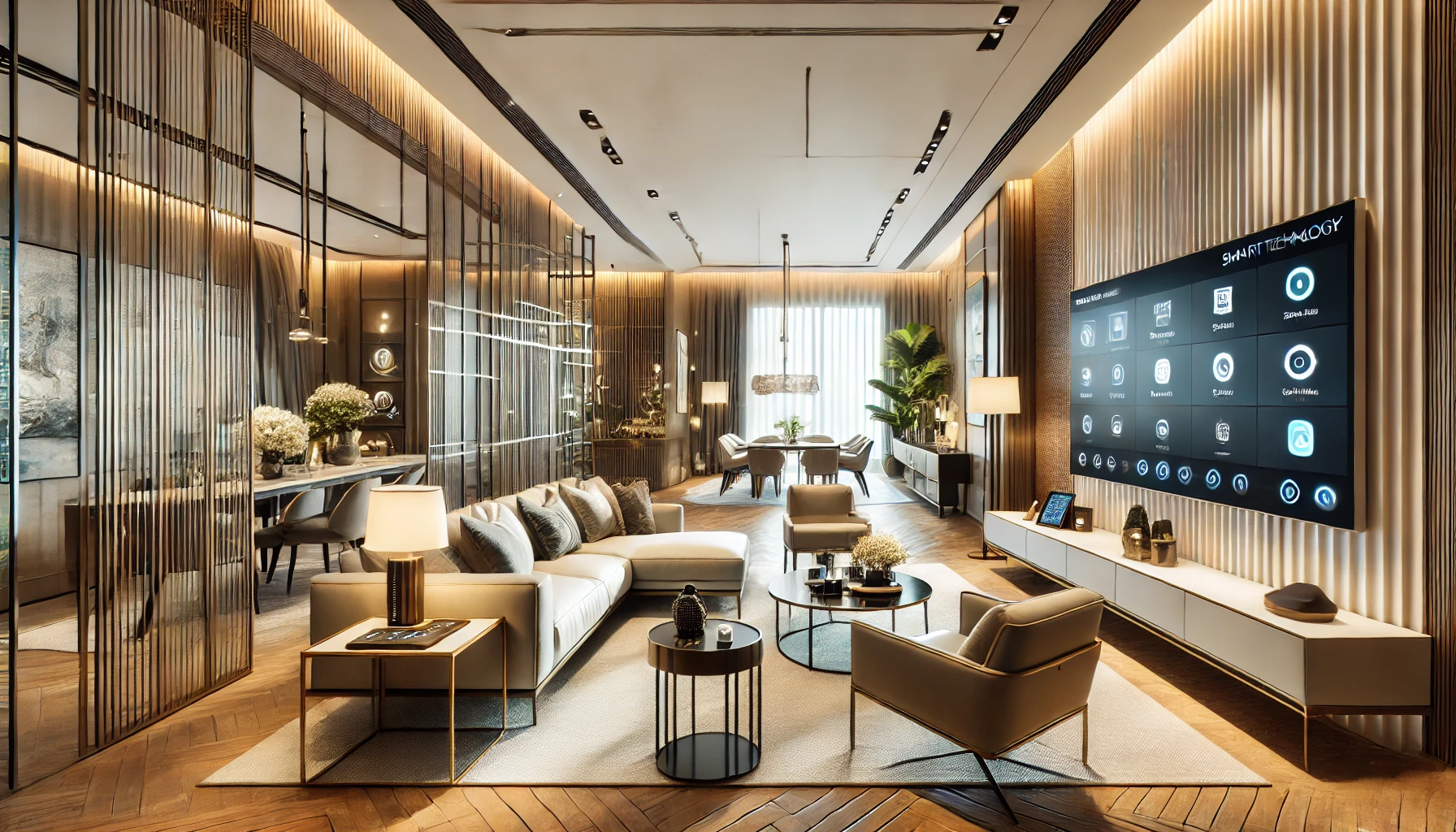
Incorporating tech without sacrificing style
One of the biggest challenges in smart home design is incorporating technology without compromising the aesthetics of your home. Fortunately, today’s smart devices are designed to be sleek and modern, blending seamlessly into any decor. Whether you prefer minimalist or traditional styles, there are tech solutions that complement your design.
Creating a cohesive smart home design
To achieve a cohesive smart home design, it’s important to integrate your tech with your interior design elements. For instance, smart lighting can be used to highlight architectural features, while hidden speakers can provide high-quality audio without detracting from your home’s visual appeal.
Eco-Friendly Smart Home Design: Creating a Sustainable Future
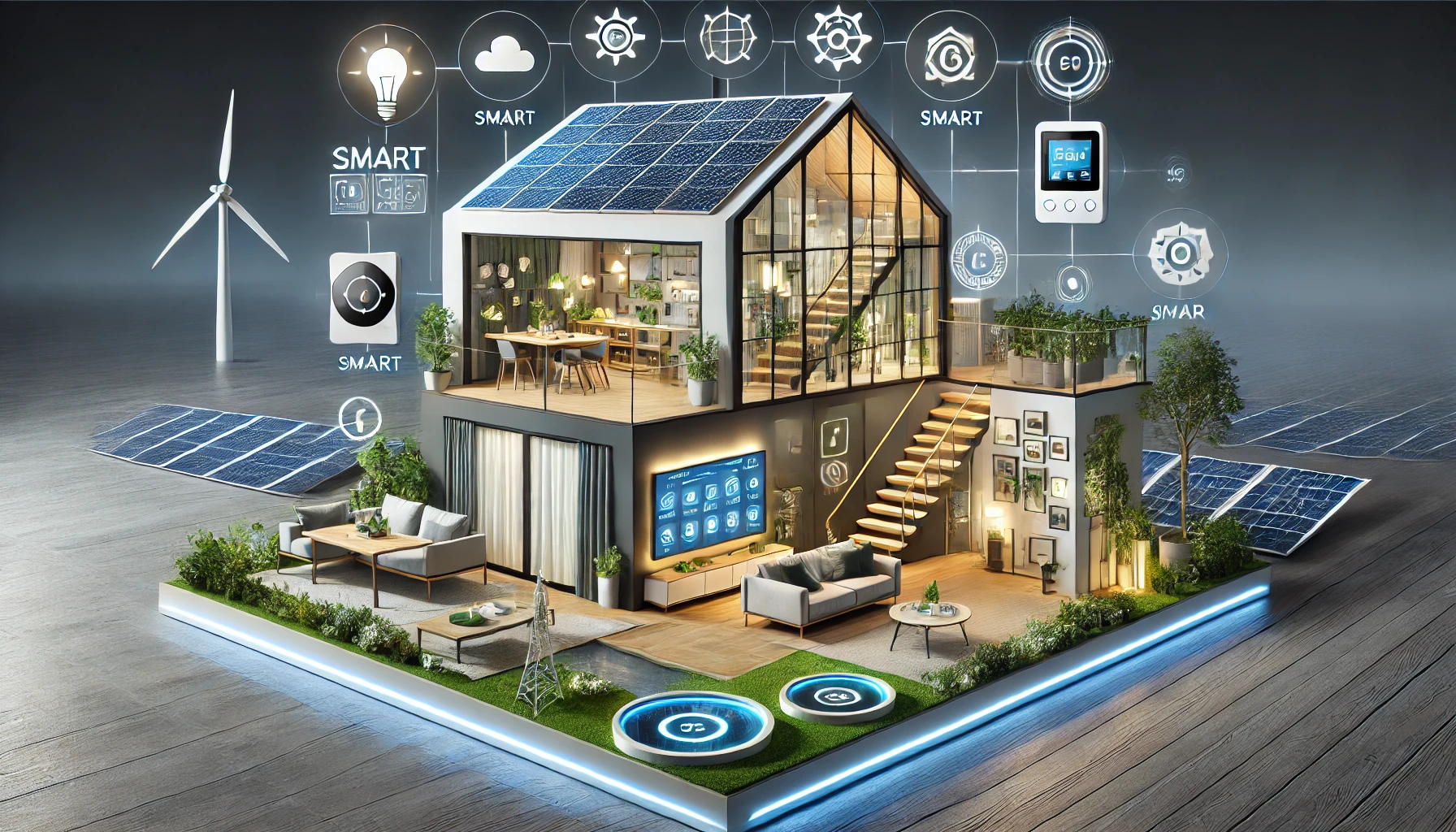
Energy-efficient devices for a greener home
Eco-friendly smart home design focuses on creating sustainable living environments by incorporating energy-efficient devices. Smart thermostats, lighting systems, and solar-powered gadgets reduce your home’s environmental impact while also cutting down on energy costs.
Smart technology and sustainability
There is a growing interest in sustainable smart home technology. Many manufacturers are now producing eco-friendly devices that not only save energy but also use environmentally safe materials. By adopting green technology, you’re contributing to a sustainable future while enhancing your living space.
Smart Home Gadgets for 2024: What to Expect
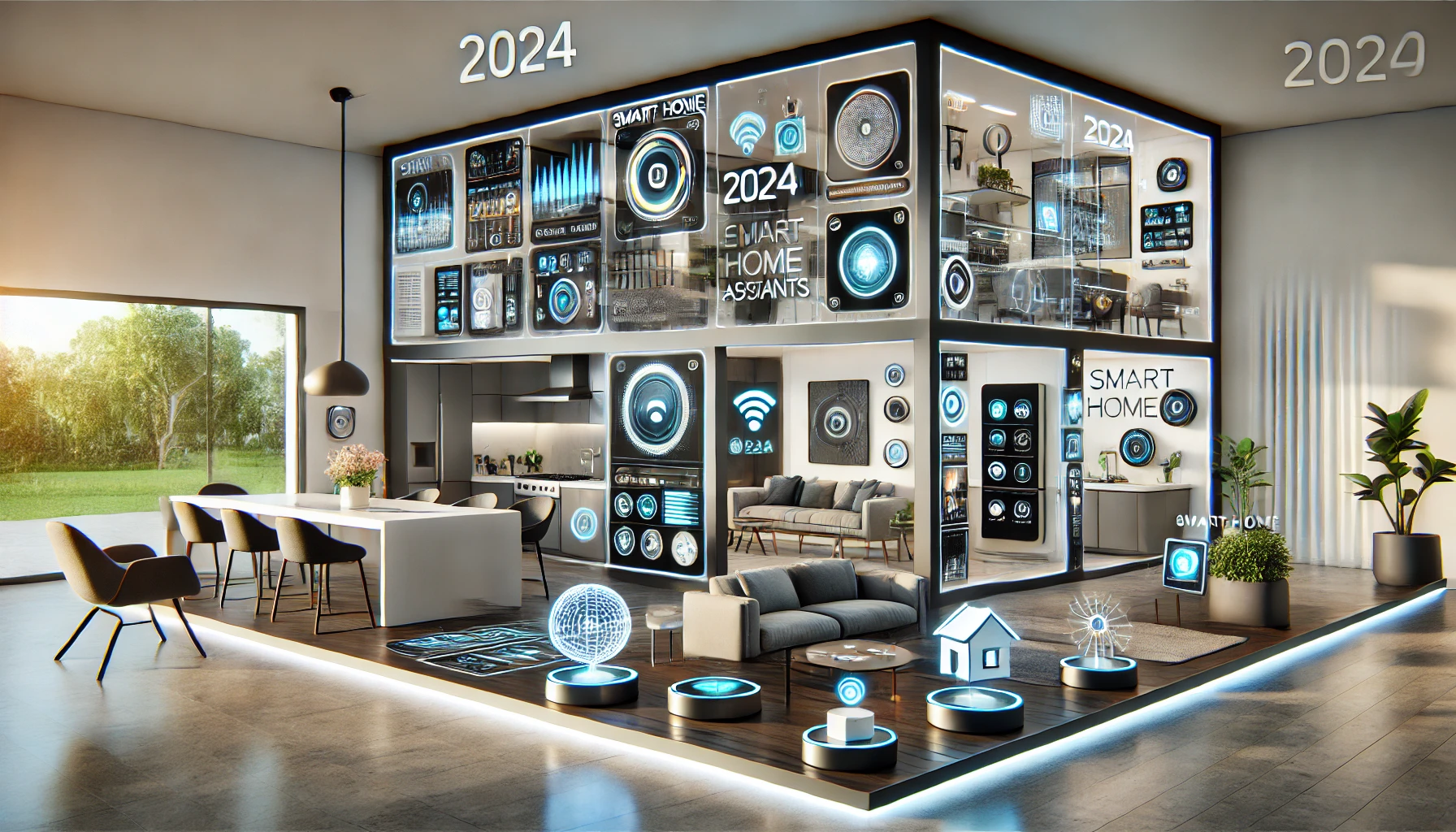
Innovative gadgets to watch out for
The future of smart home technology is exciting, with 2024 expected to bring a new wave of innovative gadgets. From AI-driven home assistants to energy-efficient appliances, smart home devices are evolving to meet the growing demands of modern homeowners.
Preparing your home for the latest technology
If you’re planning to upgrade your home in 2024, now is the time to start preparing. Make sure your home has a strong Wi-Fi network, and consider updating older devices to ensure they are compatible with the latest technology. With the right preparations, you’ll be ready to take advantage of the newest innovations in smart home design.
Transform Your Home with Smart Technology
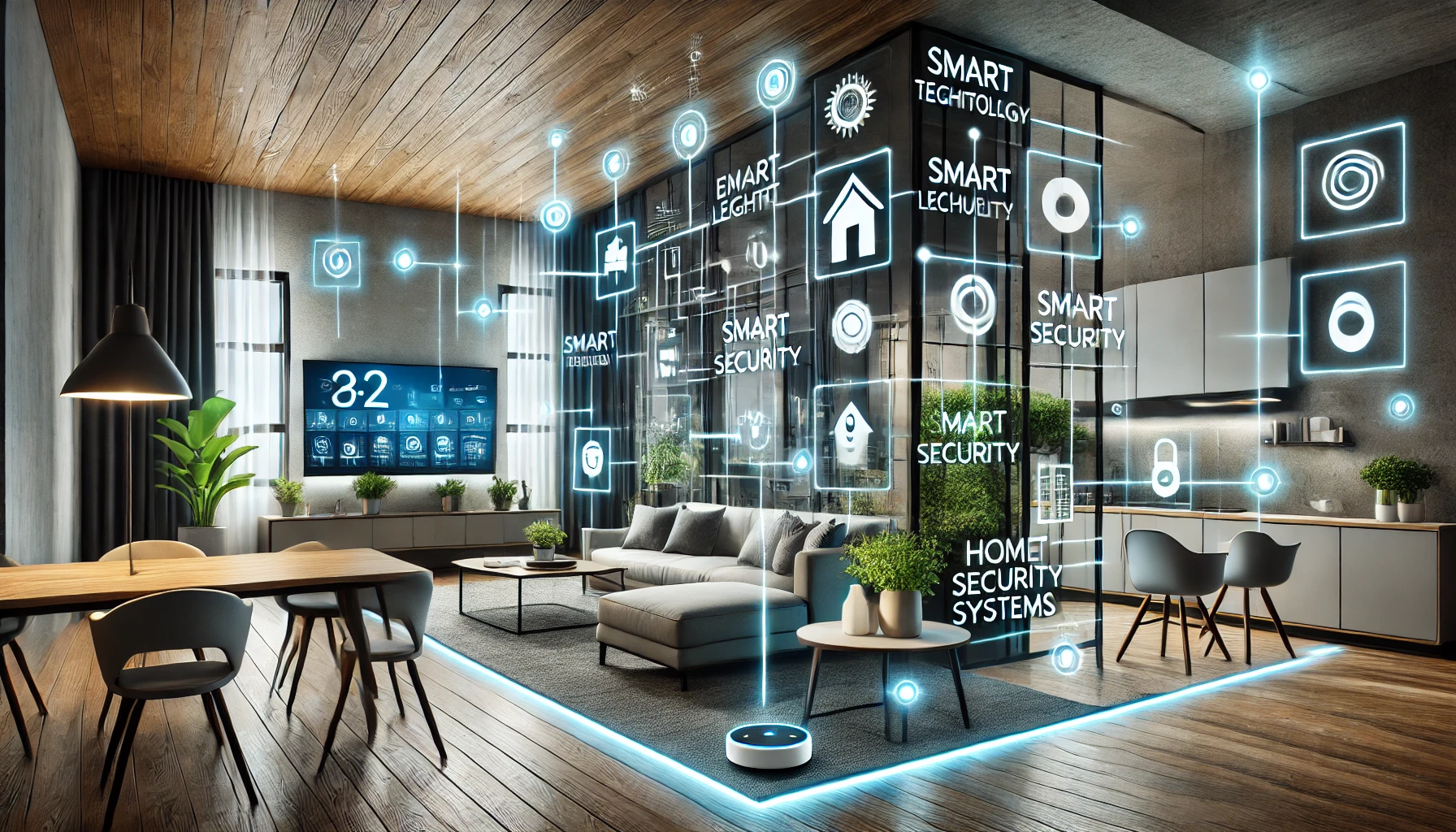
As we move further into the era of smart homes, it’s clear that this technology is here to stay. Whether you’re looking to improve your home’s energy efficiency, enhance security, or simply make daily tasks more convenient, smart home design has something to offer. By incorporating the latest gadgets and systems, you can create a living space that is not only functional but also aligned with your personal style.
Now is the perfect time to begin your smart home journey. Start small, with simple devices like smart plugs or a home assistant, and gradually build your system to include more advanced features. The possibilities are endless, and with the right approach, you can create a home that truly works for you.
Elevate Your Home with Smart Design
If you’re ready to transform your home into a smart, efficient, and beautiful space, don’t wait—start today! Smart home technology is more accessible than ever, and the benefits it offers are undeniable. By upgrading your home with smart devices, you’re investing in your future comfort, security, and energy savings.
Contact a professional home designer or explore DIY options to begin integrating smart technology into your living space. The sooner you start, the sooner you can enjoy the convenience and peace of mind that smart home design brings. Take the first step today and revolutionize your living experience!
FAQ: Smart Home Design
What is smart home design?
Smart home design refers to the integration of technology and automation into a home to enhance convenience, security, and energy efficiency. It involves using smart devices that can be controlled remotely via mobile apps, voice assistants, or centralized systems.
How do I start designing a smart home?
To start designing a smart home, begin by identifying the specific needs you want to address, such as security, lighting, or energy efficiency. Choose compatible smart devices that can be integrated into a cohesive system, and ensure you have a strong Wi-Fi network for connectivity.
Are smart homes energy-efficient?
Yes, smart homes can significantly improve energy efficiency. Smart thermostats, lighting systems, and energy-monitoring devices help reduce energy waste by automating tasks like temperature control and turning off lights when not in use.
What are the benefits of smart home automation?
Smart home automation offers numerous benefits, including increased convenience, enhanced security, energy savings, and the ability to control your home’s systems remotely. It allows homeowners to streamline daily tasks and manage their home more efficiently.
Can I retrofit my home for smart home technology?
Yes, existing homes can be retrofitted with smart home technology. Many smart devices are designed to be compatible with traditional homes, making it easy to upgrade without the need for extensive renovations.
What smart devices should I prioritize for my home?
When designing a smart home, prioritize devices that address your most important needs, such as smart security systems, thermostats, lighting, and home assistants. These devices provide the most immediate benefits in terms of convenience and efficiency.
Is smart home technology secure?
Smart home technology can be secure if proper precautions are taken. It is essential to use strong passwords, keep software updated, and choose devices from reputable manufacturers to reduce the risk of security breaches.
How much does it cost to set up a smart home?
The cost of setting up a smart home varies depending on the devices you choose. Basic setups with smart lighting and home assistants can be affordable, while more advanced systems with integrated security and automation may require a higher investment.
What is the best smart home system for beginners?
For beginners, simple and user-friendly systems like Google Home, Amazon Alexa, or Apple HomeKit are great options. These platforms offer compatibility with a wide range of devices, making it easy to start small and expand your smart home system over time.
Can smart home devices be controlled remotely?
Yes, most smart home devices can be controlled remotely through mobile apps or voice assistants. This allows homeowners to manage their home’s security, lighting, and temperature from anywhere in the world, as long as they have an internet connection.
What are the best smart home gadgets for security?
Top smart home security gadgets include smart locks, doorbell cameras, motion sensors, and full home surveillance systems. These devices allow homeowners to monitor and secure their home remotely, providing real-time alerts and controls.
What is a smart home hub?
A smart home hub is a device that connects and controls various smart devices in your home from a single platform. It allows different devices to communicate with each other and can be controlled via a central app or voice assistant.
How can smart home technology improve home entertainment?
Smart home technology enhances home entertainment through smart TVs, speakers, and streaming systems that offer personalized experiences. You can control entertainment settings through voice commands or mobile apps for a more seamless and immersive experience.
Do smart home systems work with voice assistants?
Yes, most smart home systems are compatible with voice assistants like Amazon Alexa, Google Assistant, and Apple Siri. Voice commands allow you to control various devices such as lights, security systems, and thermostats, hands-free.
What are the future trends in smart home design?
Future trends in smart home design include AI-powered systems, greater device integration, and eco-friendly smart technologies. Expect more intuitive, responsive smart home environments that prioritize sustainability and user customization.
 Home Designing Get expert home decor tips and design inspiration at HomeDesigning.blog. Transform your living spaces with trending styles and DIY ideas!
Home Designing Get expert home decor tips and design inspiration at HomeDesigning.blog. Transform your living spaces with trending styles and DIY ideas!
